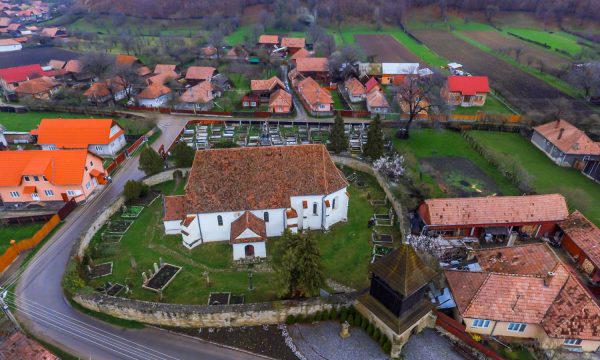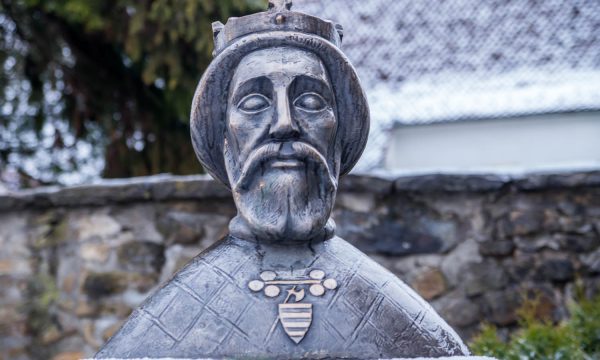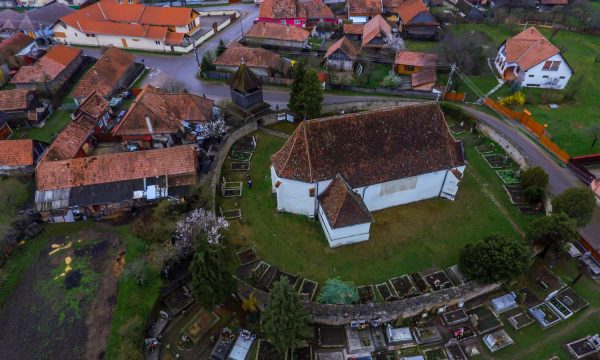Wall Painting
The church with a single nave and sanctuary is surrounded by a fortified wall with tower. The nave is covered by coffered ceiling with 103 ornately coloured pieces. The original semicircular sanctuary was rebuilt in the 1500s in Gothic style. The internal liturgical furnishings, the beautiful Baroque altars, the organ and the gallery show the willingness of the believers of Gelence to endow the church, to decorate it as richly as their own homes.

The world-renown jewel of the building is a unique medieval wall painting, depicting mainly New Testament scenes as well as the lives of different other saints. In addition to the Passion of Christ, they depict St. Jacob of Compostella, St. Catherine of Alexandria, and a picturesque narrative of the Legend of Saint Ladislaus showing the following scenes: the King going to battle with his army, the battle with the Cumans, Oghuz Turks and Pechenegs, the chase after the Cuman who attempted marriage by abduction, the fight and the pagan warrior’s decapitation.

Natural Heritage
“There are who kinds of people: those who have visited Ghelința, and those who will” – boast the people of the small village lying along the Ghelința stream. Walking up the valley of the stream we will arrive into a beech forest spotted with spruces and firs. Where the two branches of the stream meet, the rocky Nagy-Vártető (meaning Great Castle Hill) towers above the landscape. From its summit, we can get a clear view of the main ridge of the Carpathians. Those visiting in the autumn months can hear the grunting of deer bucks, too. These deep, guttural noises signal the breeding season of the red deer (Cervus elaphus).

The Oituz – Ojdula Natura 2000 site has other mammal species as well. If we are resolute enough, we might find the footprints of the Eurasian lynx (Lynx lynx) or the grey wolf (Canis lupus) in the snow. Many brown bears (Ursus arctos) also wander in the forests surrounding the village.
The fans of herbs and fungi will also be able to discover several interesting species in the area. Besides many other plants, the black false hellebore (Veratrum nigrum) and the snake’s head fritillary (Fritillaria meleagris) can be found in the spring, while the great masterwort (Astrantia major) can be found from midsummer until the end of autumn on the beech forest’s grounds. With a little luck, we will find waxcaps (genus Hygrocybe) like the blushing waxcap (Hygrocybe ovina) as well between August and November. Bilberry (Vaccinium myrtillus) patches cover the main ridge, while blackberry (Rubus fruticosus) and raspberry (Rubus idaeus) grow on the edges of forests, for the delight of animals and tourists alike.
